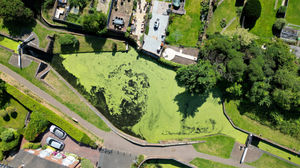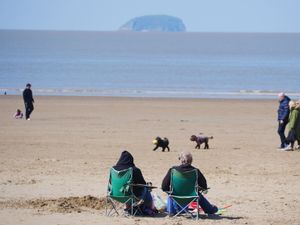Warning after blue-green algae outbreak - what is it, why is it harmful and how to keep your dog safe
As temperatures rise across the UK this summer, taking a dip in a lake may sound like the ideal way to cool off for you and your pet, however, the UK has seen outbreaks of blue-green algae which can be harmful to humans and fatal to your dog.
Watch more of our videos on ShotsTV.com
and on Freeview 262 or Freely 565
Outbreaks have already been recorded across Scotland, Northern Ireland and England, with visitors warned to keep out of affected ponds and lakes due to the high risks.
Blue-green algae typically comes into season during warmer months from spring to autumn, with higher water temperatures causing the algae to multiply. It thrives in nutrient-rich, stagnant water, making ponds and lakes prime locations for outbreaks that can prove deadly to our four-legged-friends.
As temperatures soared to 26C (80F) on Monday, duckweed coated the Stourbridge Canal near to the Red House Glass Cone in Wordsley, leaving a bright green film on top of the water.
The Canal and River Trust said the plant, while not harmful to wildlife, becomes a "major issue" when the weather gets warmer, multiplying in the summer at a "phenomenal growth rate".

Kate Jones, museums manager at the Red House Glass Cone, said she noticed the water had changed last week and described it as looking like a "green carpet".
It might be tempting to let your pet cool off in the lake during the warm weather, but a leading pet health expert is warning of the life-threatening risk that blue-green algae poses to dogs.
Veterinary and nutrition consultant from Burns Pet Nutrition, Emily Boardman warns that dogs can become seriously ill, or even die, from coming into contact with the toxic algae. Here’s everything you need to know about what blue-green algae is and how to keep you and your dog safe.
What are blue-green algae?





